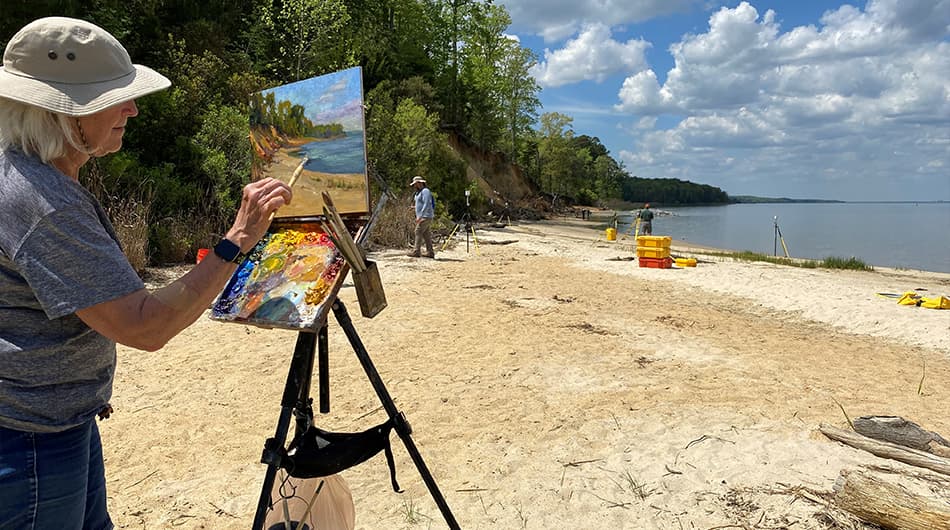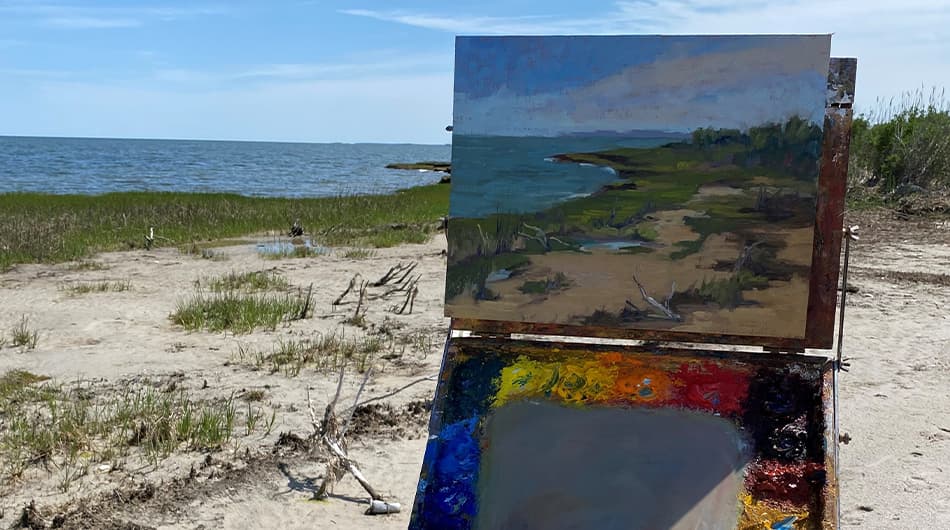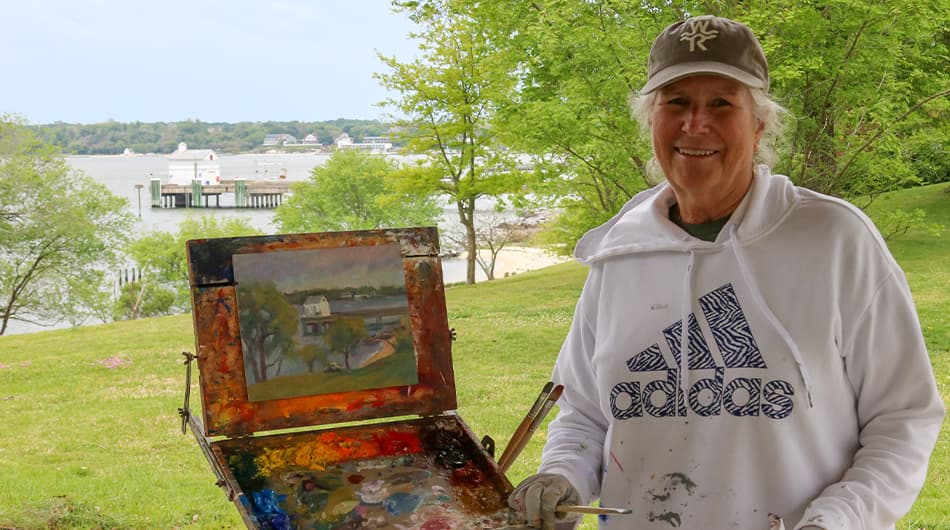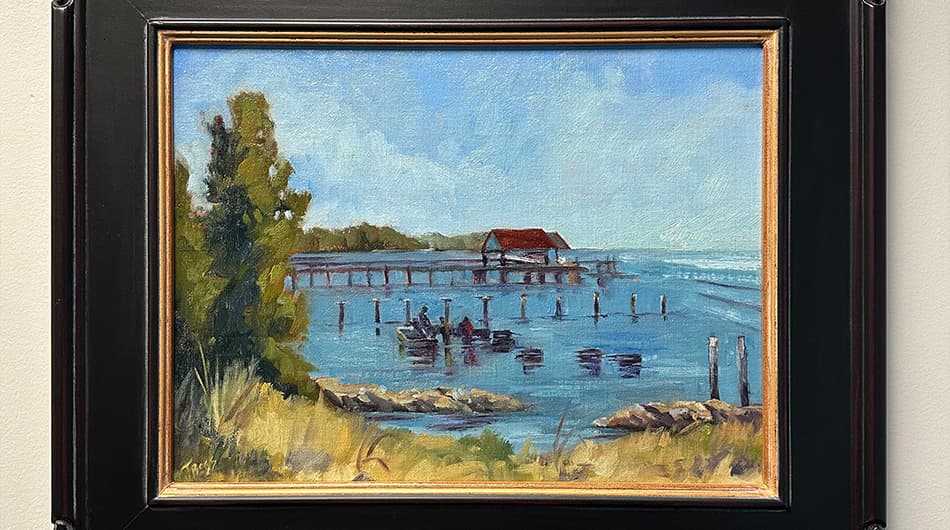“The arts and sciences have a lot in common, and that’s our love for the planet”: Inaugural artist-in-residence reflects on her time at W&M’s Batten School & VIMS
Looking out over the waters of the Chesapeake Bay from the sandy shores of the Goodwin Islands, Tricia Bass knew she was a long way from her home in Colorado. The professional painter was accompanied to the islands by researchers from William & Mary’s Batten School & VIMS, who were doing work as part of the Chesapeake Bay National Estuarine Research Reserve in Virginia (CBNERR-VA).
“I waded to shore with my gear, and I just thought it was incredible,” said Bass. “I had no idea how beautiful Virginia is, especially coastal Virginia. I just fell in love with it.” But what was this artist from the mountainous West doing on the scenic coast of Virginia?
In the spring of 2024, Bass partnered with the Batten School of Coastal & Marine Sciences & VIMS for an Artist-in-Residence (AiR) pilot program, with the idea that art can generate interest in marine science and in the Batten School & VIMS among new and diverse audiences. “The goal is science communication,” said Bethany Smith, a marine educator with the Marine Advisory Program at the Batten School & VIMS, “and reaching people we otherwise might not be able to reach.”
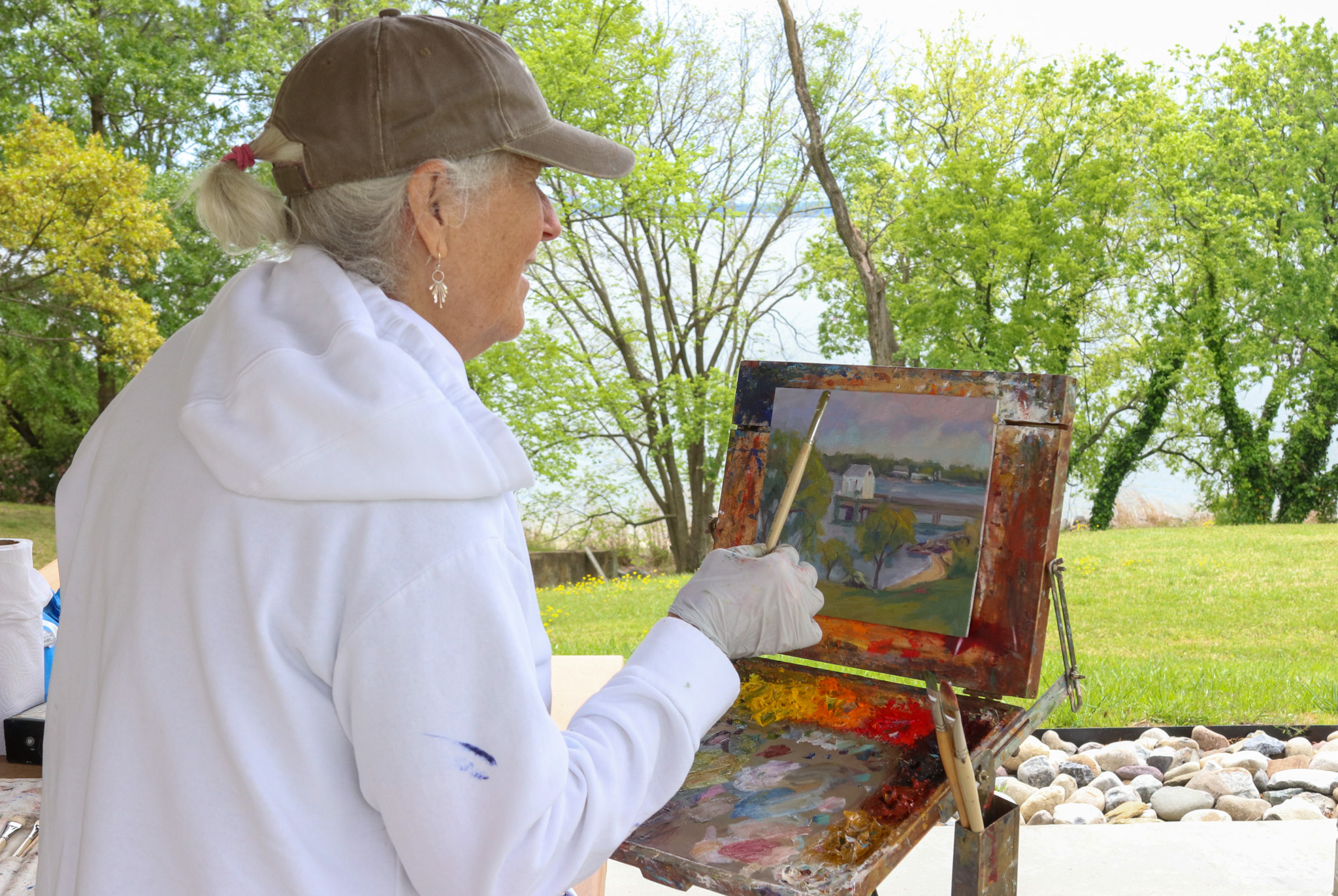 Bass spent two weeks on-site at the Gloucester Point campus, where she met with scientists and students, went into the field to paint, and led a paint-along session that was open to the public. By the end of the two weeks, Bass had created several paintings, one of which she donated to the Batten School & VIMS and is now prominently displayed in the welcome area of the Dean & Director’s suite in Watermen’s Hall.
Bass spent two weeks on-site at the Gloucester Point campus, where she met with scientists and students, went into the field to paint, and led a paint-along session that was open to the public. By the end of the two weeks, Bass had created several paintings, one of which she donated to the Batten School & VIMS and is now prominently displayed in the welcome area of the Dean & Director’s suite in Watermen’s Hall.
The AiR pilot program aligned with W&M’s designation of the 2023-24 academic year as the “Year of the Arts,” which celebrated the importance of arts education and the vital role that the arts play in all facets of the W&M educational experience. In fact, what stood out most about the AiR experience to Bass was the power of art to transcend boundaries as she connected with the Batten School & VIMS researchers.
“The arts and sciences have a lot in common, and that’s our love for the planet,” she said. “[Scientists] take that love and try to find solutions for a planet that’s challenged by climate change, whereas I’m trying to get people to fall in love with our planet and see that it really is worth protecting.”
Peer organizations have had success with similar programs. In 2018, the Journal of Business Research published the results of a study into an artist residency program at an aquaculture institute in the U.K., where researchers found “that ‘new ways of seeing’ aquaculture science resulted in the creation of aesthetic, emotional, environmental, educational and social values... [and] artist residencies, if planned thoughtfully, have the potential to create an innovative and creative culture on campus and beyond.”
Implementing the AiR pilot program was a labor of love for Smith, who first had the idea to connect art and science when she was a high school teacher and assigned a plankton-as-art project. “I realized very quickly that kids who turn in homework late or do poorly on a test would turn in amazing pieces of art with full descriptions. The lightbulb went on for me as a teacher: this is a way we can access audiences with science that maybe we’re not accessing with a lab tour or a lecture.”
Bass was excited to help make those connections at the Batten School & VIMS. “I think it’s important that VIMS shares with the world that we live in an incredibly beautiful place, and I think an artist can do that and help people care.” She added, “I hope they can do this every year, because it will help VIMS generate a whole other level of interest in their work.”
Turning AiR into an annual, or even semesterly, program is Smith’s goal, along with introducing a K-12 educational component. “To get this off the ground,” said Smith, “we will need outside support. Private funding from donors who love the arts, or the sciences or both could kick-start the entire program.”

